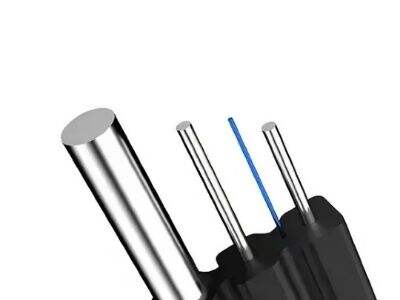Fibre optic cables are incredibly important as they aid in transporting data over long distances at very high speeds. Special cables consisting of minuscule glass strands carry information with light. This would be different from regular cables that consume electricity. These cables are connected by use of special connectors. There are a variety of fibre optic connectors, each with their own pros and cons. Let us explore some of the more commonly used connectors, and the inner workings of handle connectors in this text.
Fibre Optic Cables Common Connectors
Similar ApplicationsST Connector ST connectors are among the most used types of connectors to be used in fibre optic cables. This features a round tip that facilitates easy plugging in and out from the cable. This is really useful for when you have to tweak things, because you can plug and unplug it really quickly. A popular but different connector type as an "SC" connector. Having a square tip, this connector is also easy to insert or remove, similar to the ST connector. Because it saves time and effort, using easy-to-use connectors is vital.
The next most popular connector type is the "LC" connector, which is smaller than both the ST and SC connectors. The LC connector is commonly used when space is limited. That's just one of the reasons it's perfect for crowded locations where you'll need a lot of connectors in a small space. All of these connectors ensure that our fibre optic systems run efficiently.
What kind of connector for your fibre optic network?
Some key factors to consider. When choosing the right connectors for your fibre optic network. First and foremost is the kind of cable you have. Cable — A cable needs a compatible connector to function correctly. For instance, if your cable is a high-speed data transfer cable, you may want to choose a connector that can handle that speed.
The next step is to consider where you are going to be using the cable. What's the main use case: inside a building or outside? Certain kind of connectors are best suited for harsh environments; such as outdoors where the weather can be harsh, also in places where there is a lot of dust or moisture. Selecting the most appropriate connector for the surrounding environment is vital to ensure long-term performance and reliability.
Finally, make sure you understand the speed and bandwidth needs of your network. Bandwidth: The amount of data that can be sent at any one time. So, some connectors are more suitable for high-speed data transmission while others are only compatible with voice calls or video streaming. Knowing your network is half the battle in ensuring you are picking the right connector for your situation.
What You Need to Know About Connector Options for Fibre Optic cabling
As we have mentioned, there are several connector types for fibre optic cabling. Besides ST, SC, and LC connectors, there are some other types. The FC connector is used when additional protection of the cable is necessary, for example. It comes equipped with the kind of features that make it safer in more hazardous environments. Another connector type is the MTRJ, which is a hybrid of the ST and SC types. That means it fits in multiple scenarios.
Additional connectors are the E2000, MU and SMA connectors. Each has its unique features and utilization. So, knowing these types of connectors helps you to know which one will suit your needs.
Understanding The Different Fibre Optic Connectors Available
There are benefits and disadvantages of each type of connector. The ST connector perhaps provides the most versatility in terms of performance, ease of use and reliability in all situations, however the ST connector may not function as effectively in crowded or high-density settings. Overall, the SC connector is simple to use, but it may be difficult to connect and disconnect, and may not be as secure as the ST connection.
Contrarily, the LC connector is compact and easy to connect, which makes it preferable in high-density applications characterized by limited space. The FC connector has additional protection surrounding the cable, making it ideal for harsh environments, but it is not as easy to use as the ST or SC connectors.
So that is basically it, there are various types of connectors for fibre optic cabling. Each of these types has its own strengths and weaknesses and the choice of connector will be determined by various considerations including the cable type, the environment in which it will be used, and the required speed and pipe size in terms of bandwidth for the target network. Considering all these factors when looking for a connector is very important to choose the right connector as per your needs. Buying fibre optic connectors is an important part of networking and at Qitian, we deals in all types of fibre optic connectors so you will find all relevant products at one place.


